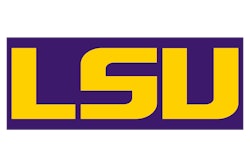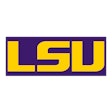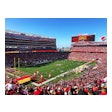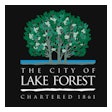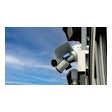Copyright 2017 The Deseret News Publishing Co.
Deseret Morning News (Salt Lake City)
SALT LAKE CITY — From his office in the University of Utah's Merrill Engineering Building, Ladislav Kavan continues to work on a research-driven challenge: making an exact copy of a large-scale environment using 3-D printers.
As an assistant professor at the U.'s School of Computing, Kavan teaches courses in computer graphics and animating physical movement. His latest work, presented at the 35th annual Association for Computer Modeling conference in Denver, combined his hobby of climbing with ongoing research on computer modeling.
Kavan and his colleagues wanted to find out if they could feasibly make a 3-D reproduction of an outdoor climbing route.
He came to the idea with friend and colleague Emily Whiting, an assistant professor of computer science at Dartmouth College. In 2012, Kavan and Whiting often spent time climbing together during their postdoctoral studies at the Swiss Federal Institute of Technology in Zurich.
"We were also working on some geometric modeling problems, which is related to fabrication and the 3-D printers," Kavan said. "We had the idea of combining the 3-D printing with the climbing."
Whiting said she had realized as far back as 2011 that there is a relationship between the sport of climbing and computer science. And during their presentation in Denver, she said, they quickly found a number of rock climbers in an audience of computer scientists.
After completing their postdoctoral work in Zurich, Kavan and Whiting began to collaborate on an idea to combine their knowledge of computer modeling with their hobby of climbing.
"To us, the idea of being able to take famous routes from different places around the world and still climb them at our home gyms was the exciting part," Whiting said.
Kavan and Whiting were aware that climbing challenges had been replicated in the past with amateur methods, the said. In 1988, when world-class climber Wolfgang Güllich dreamed of taking on the infamous German climbing route "Action Directe," he invented the campus board as a training tool with wooden slats to replicate the handholds he would face during the real climb.
The history of route replication and training tools has continued past Güllich's invention. Luzan Matyas, another climbing enthusiast, went on to create a wooden replica of "Action Directe" as a means of training for the same route Güllich ascended years earlier.
"The general problem is: How do you 3-D print something that is huge?" Kavan said.
Such an idea, he said, would be nearly impossible to do and far too costly to produce with printing plastics. Instead of taking on the heavy costs of a full reproduction, Kavan and Whiting gathered their limited resources and devised a more economical approach.
Nada Ouf, a computer science graduate student from the University of Pennsylvania, and Zhenyu Shu, of the Ningbo Institute of Technology at Zhejiang University in China, joined in the research project. Christos Mousas, a fellow postdoctoral researcher at Dartmouth, and Liane Makatura, an undergraduate student at Dartmouth, also joined in the collaborative effort.
The team devised a way to cheaply model and produce the climbing routes by taking hundreds of photos from various angles and stitching them together with multiview stereo software.
The team visited the "Pilgrimage," a climbing route in St. George, and used the spot as one of the routes to re-create in its 3-D modeling. The photos taken of the red rock formation in southern Utah were processed through the imaging software, combining the hundreds of two-dimensional pictures to form a 3-D model.
Next, the team captured video of a person climbing the same route, mapping the climber's skeletal structure as they completed each move, and overlaying the skeletal mapping on the overall 3-D model to determine where the handholds and footholds would likely be gripped by a climber.
Kavan said after watching the climber, the team was able to more isolate the exact spots to be printed, capturing key moments of the route without needing to print the entire rock face.
With a computer-operated router, the researchers created a foam model of the holds and then overlayed a silicon mold of the holds. Then they filled the mold with a casting resin that would harden to form the copy they would use for their indoor replication.
Whiting said the team hopes to continue improving the texture features, closing in on the finer details of each route as they perfect the fabrication process.
"Sandstone in one location versus granite in another location will have those tactile differences, and we are still working to capture that properly," she said.
Kavan said the idea of being able to copy a route sparked great excitement among the Dartmouth climbers who were remotely completing the path of the St. George route.
"You can train for a route that is far away without having to go there," he said. "Once you figure out the movement, then you end up taking a trip, and you will already know how to do it."
One motivation for the project, Kavan said, was to preserve climbing environments that see a lot of activity from regular climbers. Over time, routes will begin to weather away with people wearing them down, he said.
"The rock is taking a toll," Kavan said. "The climbers are practicing over and over again until they get it ... but it is kind of destroying the rock."
For Kavan, an inspiration during the project was the infamous 2006 climb of the Delicate Arch by Dean Potter. The climb gained negative attention from the public, and the arch has since been off-limits to climbers.
While costs continue to prohibit larger scale fabrications, Kavan said he hopes that one day he'll be able to climb a model of the arch without causing controversy.
"If you can take things that aren't even accessible and you don't even have access at all and still be able to bring it to your gym, it's exciting to us," Whiting said.
The process might one day harness the power of the crowd, she said, with climbers going out and photographing their climbs, then submitting their photos to a database where computer scientists can map the routes and store the 3-D models for users on the other side of the world to print and use.
The team has only just begun to take on the challenges of environmental printing, but the researchers are already looking at other possible applications.
Kavan said he believes 3-D modeling could potentially be useful for re-creating archeological sites for museums and perhaps even for mapping out crime scenes for forensic study.
Email: [email protected]
Read More of Today's AB Headlines
Subscribe to Our Daily E-Newsletter
Terms and Conditions Privacy Policy













